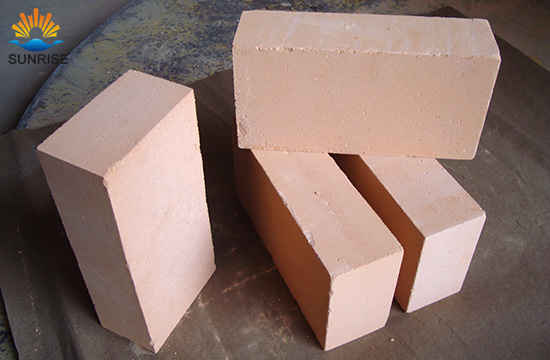Product Search
Quickly find the product you need
Products List
Refractory Knowledge
- Production Process Methods of Refractory
- Classification of mullite insulation bric
- Pollution and treatment in the production
- Refractory material production process
- The Use of Mullite Insulation Bricks
- Pros and cons of lightweight mullite bric
- Aggregates Used For the Production of Ins
- the development of the refractory brick i
- Thermal Shock Resistant Fireproof Heat In
- Manufacturing process of fire clay insula
Products List
- Phone:0086-370-63838939
- Email:sales@sunriserefr.com
- Office Address: No.36 Fengchan Road Of Zhengzhou, Henan, China (Mainland)
The six factors to affect the dense refractory brick abrasion resistance
Date:2016-08-26 18:15 | From:Zhengzhou Sunrise Refractory | Author:admin
The six factors to affect the dense refractory brick wear resistance have:
1. Hardness: hardness is often thought to be the important indicators of refractory brick abrasion resistance to measure. Harder materials, its abrasion resistance is better, but in the case of
impact wear large, hardness impact is not necessarily very large. Refractory brick is heterogeneous body, the hardness of the parts may be different. To include corundum brick, carborundum
brick, if enough intensity, when the low hardness of material wear, these high hardness of the material can still wear resistance of refractory brick.
2. Crystal structure and solubility of crystal: with a particular crystal structure material with good abrasion resistance, such as cobalt with close-packed hexagonal structure's friction coefficient is
small, wear resistance. In metallurgy between the weak solubility metal’s wear resistance is also good.
3. Strength: refractory brick in use process will encounter a lot of impact wear, therefore, high strength of refractory brick’s abrasion resistance capability is strong.

4. Bulk density: large bulk density, low apparent porosity of refractory brick's wear resistance is high.
5. Temperature: temperature has influence to the hardness of materials, solubility and reactivity, thus indirectly affect the wear resistance of refractory brick. In general, with the temperature
increasing, the hardness decreased, solubility and reactivity improved, wear resistance of materials decreased. Refractory brick is used in high temperature, wear resistance under high
temperature is very important.
6. Atmosphere: similar to the effects of temperature, atmosphere affects solubility and reactivity between materials, which affects its wear resistance.
1. Hardness: hardness is often thought to be the important indicators of refractory brick abrasion resistance to measure. Harder materials, its abrasion resistance is better, but in the case of
impact wear large, hardness impact is not necessarily very large. Refractory brick is heterogeneous body, the hardness of the parts may be different. To include corundum brick, carborundum
brick, if enough intensity, when the low hardness of material wear, these high hardness of the material can still wear resistance of refractory brick.
2. Crystal structure and solubility of crystal: with a particular crystal structure material with good abrasion resistance, such as cobalt with close-packed hexagonal structure's friction coefficient is
small, wear resistance. In metallurgy between the weak solubility metal’s wear resistance is also good.
3. Strength: refractory brick in use process will encounter a lot of impact wear, therefore, high strength of refractory brick’s abrasion resistance capability is strong.

4. Bulk density: large bulk density, low apparent porosity of refractory brick's wear resistance is high.
5. Temperature: temperature has influence to the hardness of materials, solubility and reactivity, thus indirectly affect the wear resistance of refractory brick. In general, with the temperature
increasing, the hardness decreased, solubility and reactivity improved, wear resistance of materials decreased. Refractory brick is used in high temperature, wear resistance under high
temperature is very important.
6. Atmosphere: similar to the effects of temperature, atmosphere affects solubility and reactivity between materials, which affects its wear resistance.

